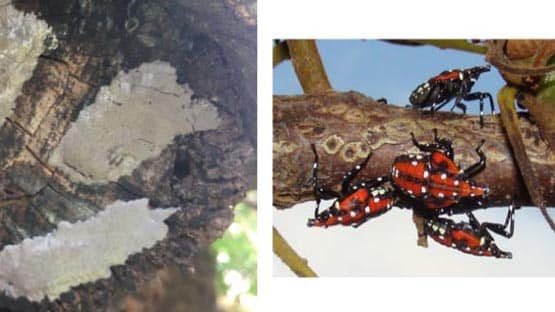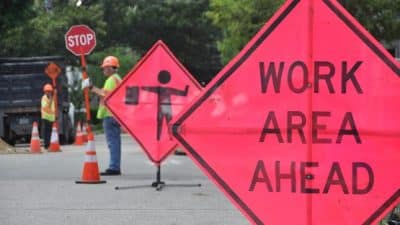
The Virginia Department of Forestry is asking homeowners to look for spotted lanternfly egg masses and destroy them before they hatch.
Cleverly camouflaged as clumps of mud, spotted lanternfly egg masses easily go undetected.
VDOF is hosting a Volunteer Spotted Lanternfly Egg Mass survey this March to monitor spread of the pest.
Residents living outside of quarantine or known infestation areas who spot egg masses are encouraged to report them using the VDOF online survey form.
“Spotted lanternfly egg masses are laid in the fall but don’t hatch until the following spring,” said Lori Chamberlin, VDOF forest health program manager.
She said now is an ideal time to look for them, while trees are bare and branches are easily visible. The oval egg masses are about 1.5 inches long and a half-inch wide. Shiny gray with a waxy protective covering, the masses eventually turn a dull grayish brown, strongly resembling patches of mud or lichen.
Spotted lanternflies lay eggs on the underside of branches, on tree trunks and on objects like vehicles, homes, lawn furniture, grills, dog houses and decorative yard items. They’ve also been found on fencing, tarps, decking, construction materials and firewood.
After reporting them, residents should destroy the egg masses by scraping them into a bag with rubbing alcohol or hand sanitizer.
“If that isn’t possible, smash them with a stick or hard object,” Chamberlin said.
Spotted lanternflies feed on more than 100 plant species but largely impact apples, hops, ornamental plants, stone fruits and wine grapes. The honeydew they secrete on plants causes sooty mold to grow blocking photosynthesis in leaves, stressing the plant, and potentially leading to plant death.
“Spotted lanternflies pose a significant threat to orchards and vineyards as well as homeowners’ lawns and gardens,” said Tony Banks, senior assistant director of agriculture, development and innovation for Virginia Farm Bureau Federation. “Everyone should be vigilant if they see new insects or egg masses on their property, vehicles or equipment.”










